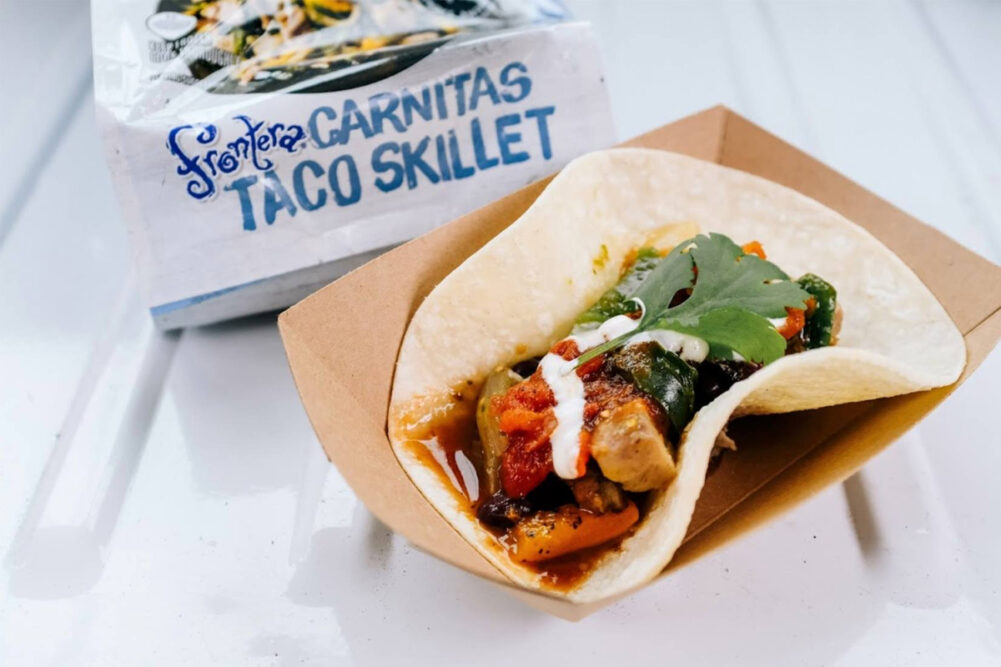CHICAGO — Before the pandemic, Americans were dining out more than ever. The coronavirus has caused unprecedented restaurant industry job losses and closings that have displaced chefs in record numbers. Those remaining have begun to innovate new models under “essential business” restrictions.
Beyond the business classification, the pivot underscores the understanding that food is essential and chefs are uniquely qualified to help consumers navigate the new normal. Chefs increasingly are donating time and resources to feeding communities and creating new products to serve customers at home. The scope of the changes suggests the new business models are here to stay — and that chefs will play a bigger role in bridging the gap between the in-person dining experience and consumer packaged goods (CPG).
From celebrity chefs to neighborhood eateries, America’s food experts are finding ways to deliver culinary experiences to restaurant-deprived consumers. Flexible ghost kitchens — also called dark or cloud kitchens — are growing and allowing independent chefs to cook food for delivery and rapidly prototype products. Meanwhile, as some chefs redesign their restaurants into micro-markets to sell curated ingredients and grab-and-go items, others are launching meal kits to deliver their restaurants’ flavors straight to customers’ kitchens.
Top Chef and James Beard Award winner Stephanie Izard, best known for her Girl and the Goat family of restaurants established in Chicago, recently introduced her Girl & the Goat-ceries meal kits to bring restaurant-quality food to her home-bound customers. The kits integrate her existing line of sauces and seasonings, which also are sold at grocery stores nationwide.
The growing demand for gourmet to go signals an opportunity for more chef-crafted CPGs. And despite their seeming novelty, they have a proven track record. Restaurateur Marie Callender’s frozen meals and Chef Hector Boiardi’s Chef Boyardee-brand pastas are established household names. Conagra Brands, Inc. manufactures the brands as well as Frontera, a gourmet Mexican line using Chef Rick Bayless’s recipes and name on the label.
Bob Nolan, senior vice president of demand sciences at Chicag0-based Conagra, sees value in partnering with chefs, who bring a “tremendous passion for attacking problems and delivering a better experience to the consumer.”
While manufacturers can harness chefs’ ingenuity to create exciting new products, they also benefit from chefs’ reputations. Cresco, a major name in the cannabis industry, set itself apart from competitors by partnering with award-winning chef Mindy Segal to launch a line of artisanal cannabis edibles. Her creative process is essential to designing authentic, quality products.
“We do a lot of ideation in my kitchen, tasting flavors and desserts,” she said, and the “product lines tell the story of my passion and craft.”
With consumer trust at an all-time low, manufacturers can tap into chefs’ genuine connection with the public to build trust, brand appreciation and loyalty.
However, a balanced partnership between chef and manufacturer is key for chef-crafted CPGs to succeed. Simply putting a chef’s name on a product is not enough. Conagra’s leadership team explains that the same individuality that makes chefs successful can make their products too niche.
“The products still have to perform,” Mr. Nolan said.
This is an opportunity to empower consumers with chef-crafted products in their own kitchens. Since dining out is unlikely to “return to normal,” the potential lies in harnessing chefs’ creative energy to redefine how Americans dine in.
Natalie Shmulik is the chief executive officer of The Hatchery Chicago, a food and beverage incubator.




